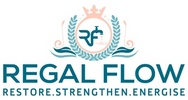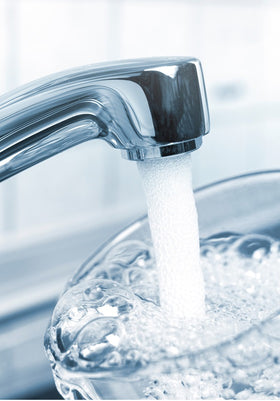
How to Fix Low Water Pressure in a Reverse Osmosis System
Struggling with low water pressure in your reverse osmosis system? Don’t panic! The fix is often simpler than you think. Whether you’re using a countertop dispenser or a full-blown system, low water pressure could be caused by clogged filters, blocked tubing, or even a faulty pump. In Reverse Osmosis: Specialised Topics and Advanced Insights, we walk you through the common culprits—and how to get your flow back on track!
Understanding Normal RO System Water Pressure
When it comes to your reverse osmosis (RO) system, water pressure plays a key role. Think of it like the heart of your filtration process—it pumps the water through the system and helps separate the clean from the not-so-clean. For an RO system to function effectively, the pressure should typically fall between 40 and 80 PSI. If your pressure is lower than that, the system struggles to filter water properly, and you’ll notice issues like slower filtration and lower-quality water.
Factors Affecting Output Pressure
Several factors determine how well your RO system performs. The incoming water pressure is one of the most important. If the water pressure coming into your system is weak, it directly impacts the speed and efficiency of filtration. Components like the filters and tubing also play a part—if they’re clogged or damaged, they can cause blockages that reduce water pressure.
Typical Causes of Low Pressure
So, what causes the pressure to drop in the first place? It could be anything from clogged filters to a malfunctioning pump. Even something as simple as a leaky hose can cause your system to struggle. Understanding these common causes is key to fixing the issue before it turns into a bigger problem.
Common Reasons for Low Water Pressure in an RO System
Several issues can lead to low water pressure in your RO system. Here are some of the most common culprits to watch out for:
Low Incoming Water Pressure
It all starts with the water coming into your system. If you live in an area with low municipal water pressure—or you rely on a private well—the incoming pressure might be too weak for your RO system to do its job properly. A booster pump could be the solution, as it increases the pressure and ensures your system operates as it should.
Clogged Pre-Filters or Post-Filter
RO systems come with pre-filters and post-filters that trap contaminants before and after the water passes through the membrane. Over time, these filters can get clogged with dirt, sediment, and other debris. When that happens, water struggles to flow through, causing a dip in pressure. Regularly changing or cleaning these filters can keep your system running smoothly.
Kinked or Blocked Tubing
Have you ever looked under your kitchen sink and noticed a kink in the tubing connected to your RO system? Even the smallest bend can lead to significant drops in pressure. If the tubing is blocked or kinked, water can’t flow freely, making filtration a slow and inefficient process. Straighten or replace any tubing that looks damaged.
Low Pressure in the Storage Tank
Your RO system’s storage tank is where the purified water sits, ready for use. If the pressure in the tank is too low, it won’t push the water out effectively. This could happen if the air bladder inside the tank is damaged or if the pressure isn’t correctly set. Checking and adjusting the tank pressure is a simple fix that can help restore normal flow.
Faulty Booster Pump (if applicable)
Not all RO systems have one, but if yours does, a faulty booster pump could be the problem. This pump is responsible for increasing water pressure, especially in homes with low incoming pressure. If it’s not working, the system won’t be able to function properly. A quick test can help you determine if the pump is the culprit.
Restricted Faucet
It’s easy to overlook, but sometimes the problem lies with the faucet. Mineral build-up or blockages can restrict the flow of water, giving the appearance of low pressure. Cleaning the faucet and checking for any restrictions can often solve the issue.
Troubleshooting Steps to Increase RO System Water Pressure
Now that we’ve covered some common causes of low water pressure, it’s time to tackle the issue. Here’s a step-by-step guide to help you get your RO system working at full capacity again.
Checking Incoming Water Pressure
Before anything else, check the pressure of the water coming into your RO system. You can do this by using a pressure gauge. If the pressure is below the recommended range, you may need to install a booster pump to increase the pressure and keep your system running at its best.
Replacing Clogged Filters
Clogged filters are one of the top reasons for reduced pressure. If your pre-filters or post-filters are dirty, it’s time to replace them. It’s also worth cleaning the filters if they’re reusable. Keeping them in tip-top condition helps maintain the flow of water and improves overall system efficiency.
Inspecting and Straightening Tubing
Next, take a look at the tubing connected to your RO system. Is it bent or kinked? Even a small blockage can reduce water flow and cause a drop in pressure. Straighten any kinks and replace any tubing that appears damaged or worn out.
Checking and Adjusting Tank Pressure
Your RO storage tank should be inflated to around 5 to 7 PSI. Use a pressure gauge to check the air pressure. If it’s too low, use a pump to add air and bring it back to the correct level. A correctly inflated tank will help maintain consistent water pressure.
Troubleshooting the Booster Pump
If your system has a booster pump, make sure it’s working properly. Check the power supply and ensure the pump is running smoothly. If the pump is malfunctioning, you may need to replace it to restore full pressure.
Examining and Cleaning the Faucet
Finally, give your faucet a once-over. Mineral build-up or blockages can sometimes restrict water flow. Give it a good clean, paying special attention to the nozzle, and see if that helps restore pressure.
Maintaining Your RO System for Optimal Water Pressure
Once you've solved the low-pressure issue, you’ll want to make sure it doesn’t happen again. Proper maintenance is key to keeping your RO system running at its best.
Regular Filter Changes
One of the easiest ways to prevent low water pressure is by regularly changing your filters. When filters are clogged, they restrict water flow and lower pressure. Follow the manufacturer’s recommendations on when to replace them.
Ensuring Proper Tank Inflation
Don’t forget about your RO system’s storage tank. Check the air pressure regularly and adjust it as needed. A properly inflated tank will help maintain water pressure and ensure your system is always ready to provide clean water.
Avoiding Kinks in Tubing
Check the tubing every few months to ensure it’s not kinked or blocked. A quick visual inspection can save you from dealing with low pressure in the future.
When to Call a Professional for RO Low Pressure Issues
If you’ve followed the troubleshooting steps and the pressure still isn’t right, it might be time to call in a professional. Here’s when to seek expert help:
If Troubleshooting Doesn’t Resolve the Problem
If you’ve checked everything and low water pressure persists, it’s likely that the issue is more complex. A professional can inspect the system in more detail and find the root cause.
If You Suspect a Faulty Pump or Tank
If you’ve determined that the booster pump or storage tank is at fault and can’t fix the issue yourself, a technician can help with repairs or replacements.
Conclusion: Restoring Optimal Water Pressure to Your RO System
Low water pressure in your RO system can be a frustrating issue, but it’s usually easy to fix with the right approach. Whether you need to replace filters, adjust tank pressure, or install a booster pump, a few simple steps can restore your system’s performance. If you’re still struggling, don’t hesitate to call in a professional to ensure everything is running smoothly. Your RO system can be back to providing clean, purified water in no time!
More Reverse Osmosis info we think you'll love
Reverse Osmosis Filter Replacement Service
Reverse Osmosis Power Consumption
Reverse Osmosis System Connections
Reverse Osmosis System Water Quality
When to Change Reverse Osmosis Filters
Reverse Osmosis Countertop System
Tankless Reverse Osmosis System
Reverse Osmosis Water Filter for Aquarium
Can Reverse Osmosis Remove Bacteria?
How to Remove Air from a Reverse Osmosis System



Leave a comment